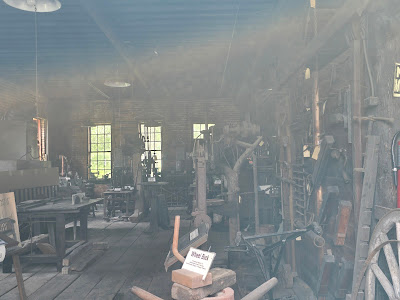The Rock Island RR Station Dows IA, Photo by the Author
It was the creation of the railroads that gave Iowa its first big boost in urban development. Many of those early railroad towns still exist, some have grown beyond those days and prospered. While others sit still, frozen in time. Dows Iowa, is one of those towns that is frozen in time. It is a living historic, and an authentic representation of a late 1800's and early 20th century railroad town. Dows features original homes, business buildings, railroad depot, one room school, a black smiths shop and a wheelwrights shop.
In 1880 after the arrival of the Chicago, Rock Island and Pacific Railroad, The town of Dows Iowa was founded. It was named after Colonel William Greene Dows, a railroad contractor. Dows was, and is unique, because it is the only town in Wright County that straddles the county line, extending into Franklin County. The area was originally called Otisville before being renamed Dows. The first settler was, A.S. Eskridge, who arrived after the Civil War. Like many other town's in Iowa, Dows development was closely tied to the railroad, with the first depot being built in 1896. This depot, now the Dows Depot Welcome Center, is listed on the National Register of Historic Places.
Blacksmith and Wagon Shop:
The Quasdorf Blacksmith and Wagon Museum, built in 1899,
Blacksmith and Wagon Shop:
The Quasdorf Blacksmith and Wagon Museum, built in 1899,
is another significant historical site, restored in 1990.
The rear windows appear to be original, with period
Note, Dows Street Historic District:
While the Dows Street Historic District is located in Ely, Iowa, it highlights the importance of transportation and the railroad in the development of towns in the region.
Views through outside window of the blacksmith shop and the wheelwright shop
The rear windows appear to be original, with period
correct panes of glass Photo by G.C. Stevens
Note, Dows Street Historic District:
While the Dows Street Historic District is located in Ely, Iowa, it highlights the importance of transportation and the railroad in the development of towns in the region.
The following are different views of the area,
all photos by the author


















No comments:
Post a Comment